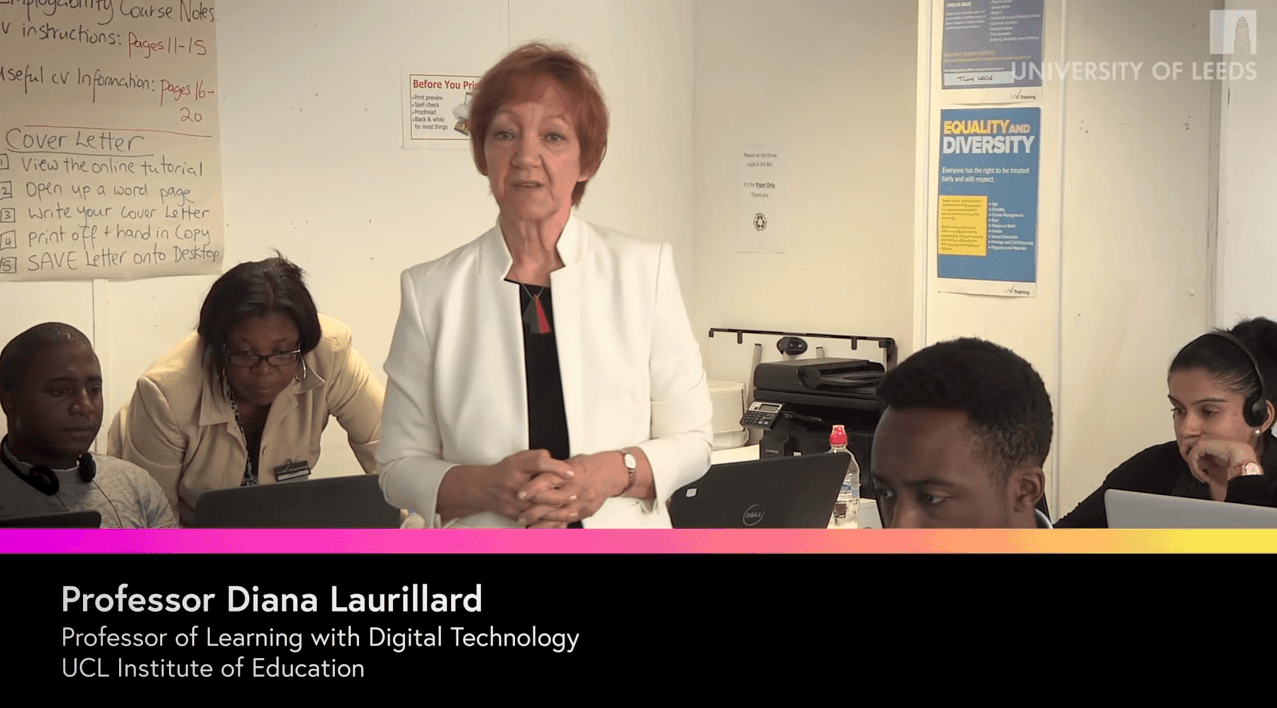In-Depth Review: Blended Learning Essentials: Getting Started
Detailed review by Class Central user Tiziana Angiolini on a course that will guide educators towards new and innovative approaches to teaching.
This review is by Tiziana Angiolini. Tiziana is an Italian teacher of English and German in a secondary school, and she loves learning and teaching. In her free time she loves to learn more about new web tools and new ways for teaching and learning.
Took the course? Write your own review here. Read all reviews.
The course was run by a great team of educators, Diana Laurillard and Neil Morris, who introduced the topic of “Blended Learning.” It was designed by the University of Leeds, which belongs to a group of universities that are now working with FutureLearn. This university was responsible for presenting the first part of the course last year, and the second part has just started this February.
I was among a group of educators and teachers, working both in European and non-European countries, who were interested in learning about new approaches to teaching.The MOOC lasted five weeks and we were provided with a lot of intriguing ideas, useful information, interesting videos, and best practices used by teachers who are following this approach.
At first I thought that this course should be only for the VET (Vocational Education and Training) sector, and as a result I was reluctant to try this new journey. But the more I got into the topic, the more I became aware of how blended learning might be part of my life as a teacher working in the twenty-first century. In some ways I had already started flipping lessons before I began the course. Given that we as teachers are lifelong learners, we will have to provide education online to more people who need to continue learning, and we must be aware of the different methods and learning management systems (LMS) that we can use today. This is true for university students and also for young learners. Education is now changing, and we should know that teaching can be done in a more interactive way in which technology plays an important part.
WHY I LIKED THIS MOOC
First of all, I liked this MOOC because I became part of an online community of learners who were guided to discover and share ideas, plans, and new tools used in education today. I cannot provide you with a detailed defintion for Blended Learning but we had a great resource and shared a lot of ideas. For example, you can see how we contributed to the discussion on this padlet.
The two educators who spoke in the videos were great with explaining and providing examples of what they were presenting, and we were given a lot of nice web links to use to find more detail.
DIGITAL SKILLS
A second point about the great job the instructors did in the course is the relevance they gave to the information about digital skills, and to the importance of social media and online safety. I am aware that as an educator I do need to learn more on these topics, and the instructors have provided me with the tools I need to deepen my knowledge.
Thirdly, we were instructed to learn about open resources and open tools. This was an interesting lesson for me because we learned how to use tools for working online, collaborating, and making presentations. This was new for some of us, but for others it was an interesting journey into the use of videos from YouTube or how to record or make a video. These are basic skills we should all know, because lessons based on videos and audio recordings are often presented in virtual learning environments.
FLIPPING THE CLASSROOM
The final part of the course was dedicated to the creation of a project or a lesson, and we were given ideas about how to blend and “flip” them. In most courses with Futurelearn we are asked to provide peer evaluation to others after we have created our homework. It was an engaging activity in this class. I provided feedback to others, and my project was evaluated by other people who were online and had taken part in the course.
The tutors made the modules an interesting “trip” into blended learning. I can say that the general framework with which we were provided has helped me to understand that it can help meet different needs, like differentiating instruction, flexibility, and inclusion. There are different ways for working, but the framework can help us with different learning styles and needs.
CONCLUSION
Finally I would like to say that we could choose how to work and catch up, which was great because teachers are also workers; working online by doing a MOOC is a great opportunity for self development.
WHAT NEXT?
Blended Learning Essentials: Embedding Practice is the second part of the MOOC. It started in early February, and it will help us develop our skills further.
The MOOC’s information will be linked to what we have already learned in the first five week course, which has widened my horizon.
[review_widget]
Class Central is looking for reviewers and regular contributors. If you’ve ever finished a MOOC and want to write a critique to help future students who are considering taking that course, we want to hear from you. Drop us a mail.






